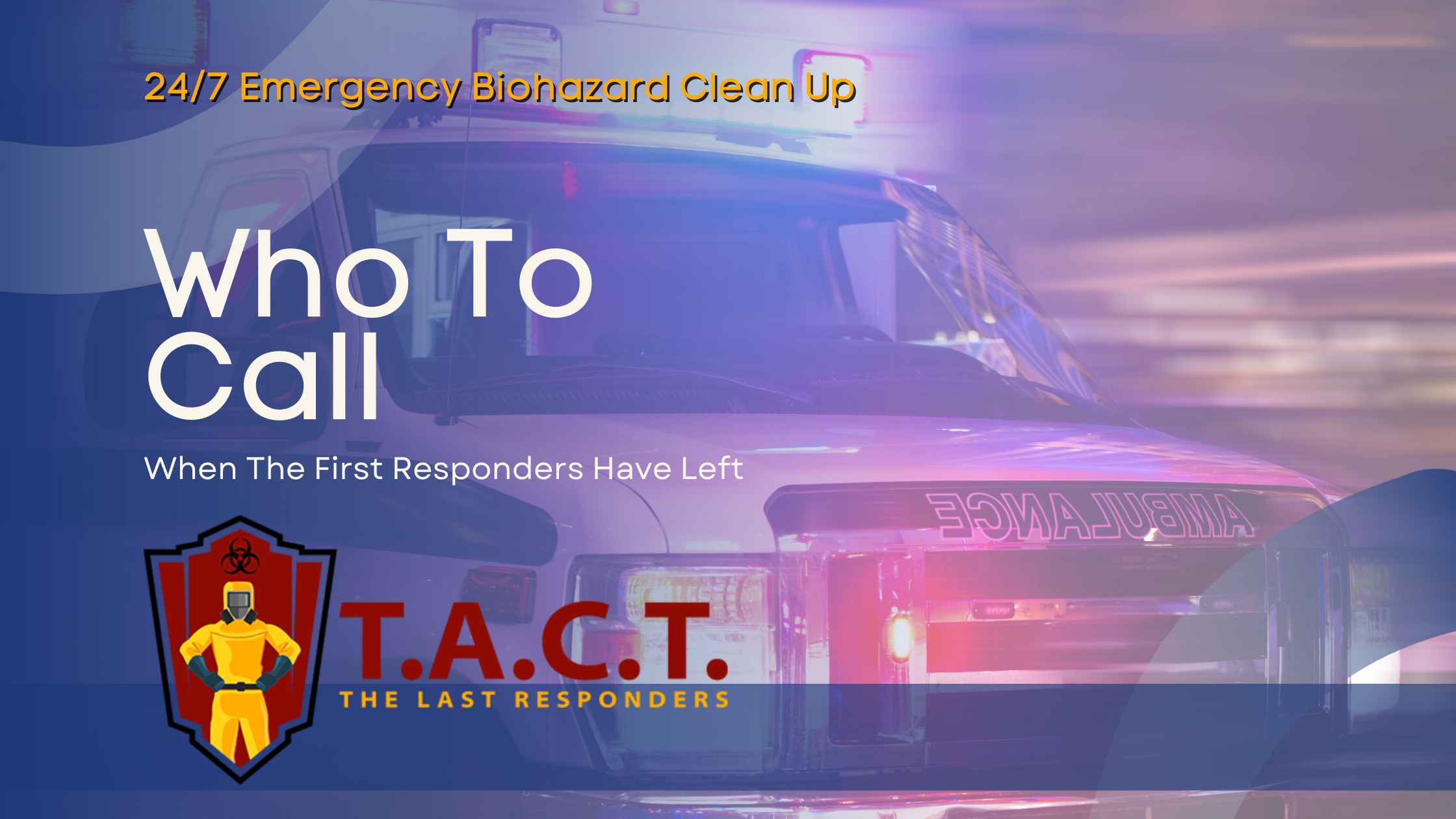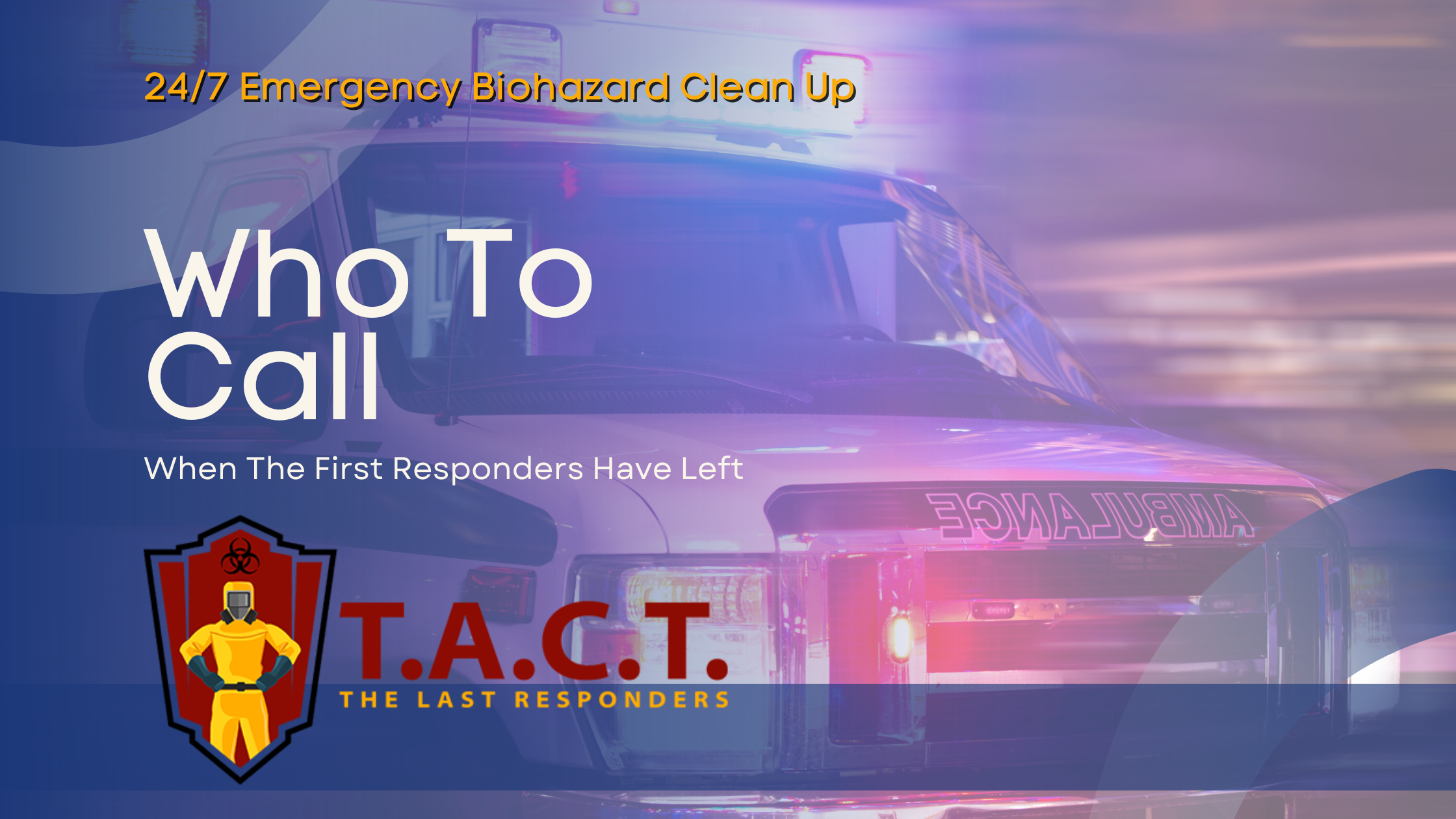Cleaning trauma impacting your life?

Is Cleaning Trauma Impacting Your Life? Understanding & Coping Strategies
Ever wondered why trauma might make you clean obsessively? In this article, we’ll explain the link between trauma and cleaning trauma behaviors. You’ll learn the psychological reasons, coping strategies, and how professional help can assist when it becomes overwhelming.
Key Takeaways
Trauma can lead to compulsive cleaning behaviors as a coping mechanism, reflecting a desire for control and stability in response to overwhelming emotions.
Professional help, including therapy and trauma cleaning services, is essential for managing traumatic cleaning behaviors that disrupt daily life.
Developing healthy coping strategies, such as mindfulness and self-care routines, is crucial for trauma recovery and managing cleaning impulses.
Understanding Trauma and Its Impact on Cleaning Behaviors

Trauma is a deeply distressing experience that overwhelms an individual’s ability to cope, often leading to profound emotional and psychological effects. For many, the aftermath of trauma can manifest in various obsessive behaviors, including compulsive behavior cleaning and trauma response. This connection between trauma and obsessive-compulsive behaviors has gained recognition in mental health research, highlighting how deeply intertwined these experiences can be.
Trauma survivors may use cleaning behaviors to manage overwhelming emotions and regain control in their lives. Individuals may engage in deep cleaning to alleviate feelings of contamination and anxiety following a traumatic event. This need for cleanliness and order can be a direct response to the chaos and instability triggered by trauma.
A desire to manage feelings of contamination and anxiety can also lead to obsessive cleaning behaviors. Research suggests that traumatic experiences can lead to the development of cleaning-related OCD behaviors, creating a cycle between trauma and compulsive cleaning. Understanding these behaviors is crucial for recognizing when they may be signaling a deeper need for emotional and psychological support.
The Psychology Behind Compulsive Cleaning
Obsessive-compulsive disorder (OCD) and post-traumatic stress disorder (PTSD) are psychological conditions that can be intricately linked to compulsive cleaning behaviors. Individuals with OCD, for example, may express their compulsions through repetitive behaviors and cleaning rituals, driven by an intense preoccupation with cleanliness or hygiene. This manifestation of compulsive behaviors can serve as a way to manage underlying fears or anxieties related to traumatic experiences.
Compulsive cleaning can temporarily offer control and stability amidst the chaos for those dealing with the emotional aftermath of trauma. Cleaning allows individuals to focus on something tangible, distracting from distress and fostering a sense of accomplishment and order.
The Role of Control in Trauma-Related Cleaning Activities
The cleaning process provides trauma survivors with a tangible means to assert control over their environment, fostering empowerment. This pursuit of cleanliness often reflects a deep-seated need for control and can significantly alleviate stress and anxiety. Traumatic experiences frequently destroy an individual’s sense of control, leading to feelings of helplessness that can be addressed through cleaning activities.
Cleaning rituals give trauma survivors temporary feelings of mastery and achievement, aiding in coping with distress. A clean house promotes calm and tranquility, aiding in the recovery process by providing a stable and controlled environment. Moreover, the physical activity involved in cleaning can promote better mental health by alleviating symptoms of anxiety and depression.
Maintaining cleanliness offers trauma survivors a measure of stability by controlling their surroundings. This sense of control can be particularly beneficial in restoring order and reducing the chaos caused by traumatic events, ultimately supporting their overall well-being and recovery.
When Professional Help is Essential
If trauma-linked cleaning behaviors become overwhelming or interfere with daily life, professional help is necessary. Mental health professionals, such as those specializing in Cognitive Behavioral Therapy (CBT), can effectively assist in managing compulsive cleaning behaviors and addressing the underlying trauma. Trained professionals offer the treatment and support needed to help individuals regain control over their lives.
Trauma cleaning services provide discreet and compassionate support during overwhelming situations that clients have dealt with in their business. These remediation services ensure that clients receive the emotional and practical assistancethey need, working alongside mental health professionals to create comprehensive recovery plans. If you need assistance, please contact us.
Utilizing professional cleaning services can significantly alleviate the burden of emotional distress associated with traumatic events, seeking professional support and providing a sense of relief.
The Benefits of Trauma Cleaning Services
Trauma cleaning services are crucial for supporting individuals through their recovery after traumatic events. They ensure discretion by using unmarked vehicles and respecting clients’ privacy. Additionally, trauma cleaning services often collaborate with insurance companies to facilitate financial and logistical support, making the entire process smoother for clients.
Clients are involved in the cleaning process, with technicians prioritizing the recovery of valuable personal items. Trauma cleaning services utilize advanced equipment and techniques to effectively manage hazardous materials and restore environments. The cleaning process is structured to provide clear communication, keeping clients informed throughout each step, which helps in reducing their stress and anxiety.
Trauma cleaning services operate 24/7 to provide immediate support during unexpected, distressing situations, ensuring timely and effective assistance. This round-the-clock availability is crucial in addressing the urgent needs that often arise in the wake of traumatic events, providing a lifeline for those in need.
Developing Healthy Coping Mechanisms
Healthy coping mechanisms are vital for managing the emotional fallout from trauma. Here are some effective coping strategies:
Mindfulness practices - These can significantly enhance emotional well-being.
Self-compassion - This helps alleviate anxiety and depression symptoms, promoting better mental health during recovery.
Mindful awareness - This allows individuals to recognize and transform self-critical thoughts into compassionate ones, fostering a healthier emotional state.
Activities such as exercise, mindfulness, creative hobbies, and therapy can help trauma survivors express stress and emotions in a healthy way. Engaging in pleasurable activities like art, music, and outdoor activities can provide joy and contentment, serving as healthier coping mechanisms. Setting realistic cleaning goals and establishing a balanced routine can help manage cleaning impulses and reduce stress.
Gradually delaying cleaning actions can help challenge compulsive behaviors and reduce urges. Incorporating relaxation techniques like progressive muscle relaxation can further reduce cleaning-related anxiety. A support network is crucial, helping trauma survivors feel connected and less isolated.
The Importance of Personal Protective Equipment in Trauma Cleaning

Personal protective equipment (PPE) is essential for ensuring the safety of trauma cleaning professionals. PPE minimizes exposure to hazardous materials during the cleanup, protecting workers from infectious materials and toxic substances. Essential PPE items include full-body coveralls, nitrile gloves, and respiratory protection like N95 masks. Proper training on PPE usage and maintenance is crucial for ensuring the safety of trauma cleaning professionals.
PPE should be selected based on a detailed risk assessment of the hazards at each trauma scene. Advancements in PPE technology aim to enhance comfort and effectiveness, ensuring trauma cleaners can perform their job safely and efficiently.
Safe Removal and Disposal of Biohazardous Waste
Biohazardous waste, including materials such as human blood, bodily fluids, and sharps, requires specific handling due to their infectious nature. The safe removal and disposal of hazardous waste involve strict procedures to prevent contamination and harm. Biological waste must be transported in sealed, leak-proof containers clearly marked with ‘biohazard’ labels. Disposal of liquid biological waste can be done through the sanitary sewer if it has been decontaminated, including biohazardous materials.
Sharps waste should be discarded in approved containers to prevent handling injuries. Regulations mandate regular, ideally daily, decontamination and proper disposal of biological waste to ensure safety. Trauma cleaning services adhere to these strict procedures to effectively remove contaminants and protect human health.
Specialized Chemicals and Cleaning Products
Specialized chemicals and cleaning products are critical in the trauma cleaning process. Hospital-grade disinfectants, containing alcohol, sodium hypochlorite, formaldehyde, glutaraldehyde, and hydrogen peroxide, ensure thorough decontamination of trauma scenes. These disinfectants are effective against various bacteria and viruses, providing a safe and clean environment.
Advanced techniques are used to ensure that no harmful pathogens remain during trauma cleaning. Misuse of strong cleaning chemicals can damage surfaces or pose health risks, highlighting the importance of proper training and handling in preventing accidents and ensuring direct contact with safe cleaning practices.
Addressing Negative Emotions and Stress
Compulsive cleaning can serve as a means to escape intolerable emotions and memories of a traumatic experience. This behavior temporarily escapes difficult feelings and shifts focus from intrusive thoughts, offering a sense of value or purpose. Using cleaning to avoid emotional pain can hinder the healing process. It can also prevent true resolution of trauma.
Recognizing triggers for compulsive cleaning is vital for managing these behaviors effectively. When healing from trauma, the focus should be on self-acceptance and self-validation rather than cleaning behaviors. Avoidance is a common response to trauma, causing individuals to distance themselves from related situations, people, or memories.
By addressing the negative emotions and stress associated with trauma, individuals can work towards healing and recovery. This involves recognizing and confronting these feelings, rather than avoiding them through compulsive cleaning.
How Trauma Cleaning Services Handle Crime Scenes and Unattended Deaths
Specialized training and strict protocols are required for handling crime scenes and unattended deaths. Assessing the contamination severity is the first step in trauma cleaning to inform planning and ensure safe procedures. Obtaining permission from the property owner or representative can complicate the initial assessment due to privacy laws.
The forensic cleaning process addresses biological hazards, requiring specialized training and adherence to industry standards. Illicit drug scenes require additional safety measures to handle toxic substances effectively during biohazard cleaning. Trauma cleaning adheres to local and state regulations to ensure the safe disposal of biohazardous waste. Cleanup professionals document the scene with photographs and notes for insurance and future reference.
A final inspection is performed after cleaning to ensure the area is safe for reoccupation. The cleanup team conducts a safety assessment to identify health hazards before starting the cleaning process.
Dealing with Hoarding Situations
Hoarding disorder requires a sensitive and structured cleanup approach to effectively handle the unsafe living conditions arising from excessive clutter in a hoarding situation. Professional cleaning services assess clutter levels, from mild disorganization to extreme cases posing health risks and structural damage.
Clutter in hoarded homes can include hazardous materials, such as spoiled food, animal waste, and mold, necessitating specialized biohazard cleanup. Effective hoarding cleanup often involves sorting items to determine what can be kept, donated, or safely disposed of.
The clean up process may include deep sanitization efforts to ensure that health hazards are removed and the property is cleaned to a safe living condition.
Self-Care and Compassion During Trauma Recovery

Engaging in self-compassion is crucial for trauma recovery, as it helps cultivate kindness towards oneself and reduces feelings of self-criticism. Self-compassion not only aids personal healing but also enhances the capacity to empathize with and care for others. Establishing a self-care routine that includes enjoyable activities can enhance overall well-being and prevent overwhelming feelings during cleaning.
Compassionate care is crucial in managing hoarding situations, addressing both physical cleanup and emotional support for affected individuals.
Building a Support Network
A support network is crucial for trauma survivors, providing the necessary framework for healing. A strong support network consists of family, friends, and professionals who can offer guidance and understanding. Emotional support helps to mitigate feelings of isolation often experienced by trauma survivors.
In summary, a robust support network is integral to coping with trauma, fostering a sense of community and belonging.
Finding Balance in Cleaning Routines
A structured cleaning schedule can help limit impulsive cleaning driven by anxiety. Establishing a realistic cleaning schedule helps reduce stress about maintaining a tidy home. Assigning specific cleaning tasks to particular days can create a manageable routine.
Incorporating brief, timed cleaning sessions can make the process less overwhelming. Using a cleaning caddy to carry supplies can streamline the cleaning process across different rooms, making it a great deal easier for a cleaner experience.
Monthly evaluation and adjustment of your cleaning routine ensure it remains effective and manageable. Finding balance in your cleaning routine can greatly enhance your well-being and prevent overwhelming feelings associated with cleanliness.
Summary
Understanding the intricate relationship between trauma and cleaning behaviors is crucial for recognizing when these behaviors may be signaling deeper emotional and psychological needs. From the psychology behind compulsive cleaning and the role of control in these activities to the importance of professional help and developing healthy coping mechanisms, we’ve covered a comprehensive guide to trauma cleaning. Trauma cleaning services offer invaluable support, utilizing specialized equipment and techniques to manage hazardous materials and restore safe environments.
As we navigate the recovery process, it’s essential to develop healthy coping mechanisms, practice self-care and self-compassion, and build a robust support network. By finding balance in our cleaning routines and recognizing the need for professional intervention when necessary, we can foster a healthier, more stable path to healing and recovery.
Frequently Asked Questions
What is trauma cleaning?
Trauma cleaning is a specialized service focused on safely cleaning and restoring areas affected by traumatic events, such as crime scenes or unattended deaths, by removing biohazardous materials. This process ensures both environmental safety and a return to normalcy for affected spaces.
Why do trauma survivors engage in compulsive cleaning?
Trauma survivors often engage in compulsive cleaning to cope with anxiety and regain a sense of control, providing a temporary escape from emotional pain related to their trauma. This behavior can be a way to navigate overwhelming feelings by creating an orderly environment.
When should professional help be sought for compulsive cleaning behaviors?
You should seek professional help for compulsive cleaning behaviors when they become overwhelming, disrupt your daily life, or relate to past trauma. Timely intervention can provide the support and treatment needed to regain control.
What role do personal protective equipment (PPE) play in trauma cleaning?
PPE plays a critical role in trauma cleaning by safeguarding workers from hazardous materials and potential infections. Utilizing full-body coveralls, nitrile gloves, and respiratory protection ensures safety and compliance during these sensitive operations.
How do trauma cleaning services handle biohazardous waste?
Trauma cleaning services expertly manage biohazardous waste by employing rigorous protocols that include using sealed, leak-proof containers for disposal, thorough decontamination processes, and compliance with local and state regulations, ensuring safety and prevention of contamination.
Latest news

Bio Cleaning Services
Read More
Nosy neighbors peeking? T.A.C.T. North Atlanta offers discreet biohazard remediation for rodent infestations, mold, hoarding, and more. Unmarked vehicles, quiet experts, full privacy—24/7 service at 470-781-4775.
Read More
